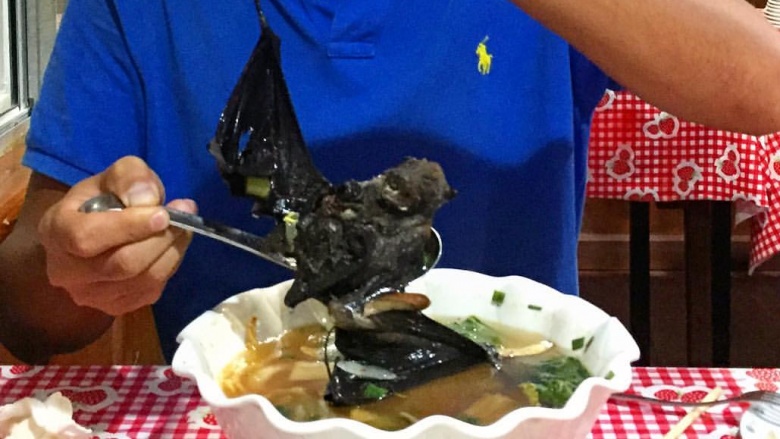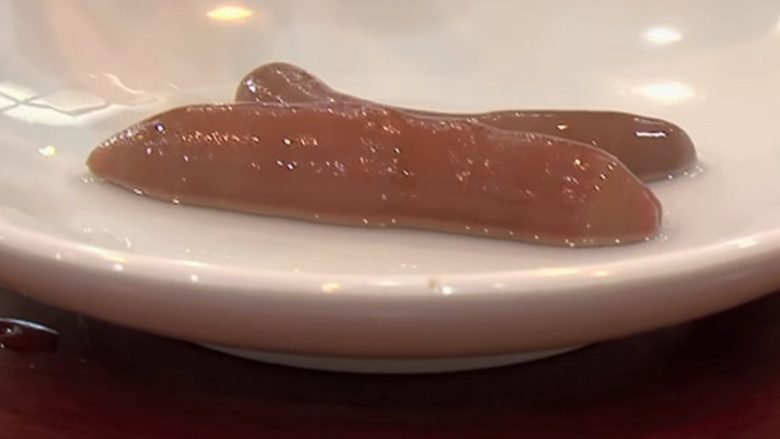Terrible-Sounding Food People Eat Just To Survive
Necessity is the mother of invention, and that's never been truer than when it comes to survival. It's amazing what a hungry person can find appetizing, and also what strange lengths people will go to to avoid hunger. The western urban stereotype of survival would have you eating nothing but canned food during difficult times, but there are some parts of the world—and some situations—where surviving means facing a bit more of a challenge than culinary boredom and sharp edges of a tin can. Here are a few foods that people eat to survive, but probably don't want to.
Hardtack
Hardtack is a simple biscuit made from water and flour, which is then baked till it's rock hard. The harder and dryer the biscuit is made, the longer it will last, making this fairly unappetizing dish a staple for armies and navies ever since there were armies and navies to need it. If kept in ideal conditions, it is claimed that hardtack will keep almost indefinitely (there are examples in museums that claim to date from the mid-19th century) but, as you might expect, on an old-fashioned wooden sailing ship, conditions were always far from ideal. This meant that if you were lucky, you got a flavorless, but seriously hard dinner, and if you were unlucky it was filled with bugs.
Soldiers in the American Civil War would drop their hardtack into hot coffee, which would serve to both soften the biscuit and separate the worms, by letting them float to the top. On Royal Navy ships in the 19th century, it was common to remove the bugs by tapping the biscuit on the table before taking a bite—but when you consider that a British sailor had a whole pound of the stuff to eat every day, you'll understand why he also received a whole gallon of beer to wash it down with.
Kiviak
Kiviak is a dish eaten by the Inuit people of Greenland. To produce it, you need a dead seal and several hundred Auks, which is a kind of seabird. The Auks are packed whole into the hollowed-out seal (yes, whole), then the seal is sewn up, the remaining air squeezed out, fat rubbed on to deter flies, and then the whole thing is placed under a large rock to keep the air out.
Over a period of months, the birds ferment to the point where they can be removed and eaten safely without any other preparation. This is usually timed so that the food becomes available in the winter, when supplies can run low and the lack of light makes hunting difficult. This is definitely one of those foods that makes you wonder how anyone came up with it, but perhaps someone starving in the dead of winter makes do with whatever he can find. If all he finds is a seal that choked to death on a seabird six months ago before being crushed by a rock, then that is what he gets—along with a good reason to get better at hunting.
Fruit bat soup
Sometimes survival just means making do with what you have, and on the islands of Palau, what they have is bats. Fruit bats are preferred to the insect-eating bats because their diet is cleaner, and to prepare them, they are boiled for several hours in coconut milk, ginger, and spices. For some reason, the bat is left almost completely whole during this process, which results in what looks like a bat taking a bath on your table, but reportedly tastes something like chicken (surprise, surprise).
Bat meat is high in protein and low in fat, which actually makes it a good option if you're in need, and boiling the animal whole makes sense if you're starving and don't have the time or energy for culinary precision. But the amazing thing is, this fairly disturbing "chicken of the cave" soup is actually considered a delicacy on the island. This is evidence of either a clever marketing ploy in the name of tourism, or a discriminating—but nevertheless entirely foreign—palette.
Penis fish
Otherwise known as Urechis unicinctus, the penis fish is not actually a fish, but a type of marine spoon worm. And as you might have guessed, it bears a striking resemblance to a certain part of the male anatomy. A common ingredient across Asia, the penis fish is eaten raw and cooked, whole and sliced, dried and powdered, and you might not be surprised to hear that it's sometimes considered an aphrodisiac. After all, "if it looks like a duck ..."
People who have eaten it report a salty flavor, and a rubbery texture not unlike chewing balloons—neither of which sounds particularly appetizing. So perhaps the other common use for the penis fish is the best use for the penis fish: using it as bait to catch something else.
Urine
Despite the fact that the practice has been widely debunked, some people persist in believing that drinking your own urine in an emergency is a good idea. It was famously done by Aron Ralston when his arm was trapped by a loose boulder while hiking in Utah, an experience (the trapped arm, not the urine) which inspired the film 127 Hours. The problem with urine is, it contains a bunch of salts and other waste materials that the body decided to get rid of, and by consuming it, you are forcing the body to do all that grunt work over again. Talk about rude.
If you simply must drink urine in a survival situation, and you have the means to do it, the best way to go about it is to purify it by evaporation. This is quite slow, however, and works best on a hot day. It is also quite difficult to do halfway up a rock face with one arm trapped, so it's not a perfect solution by any means ... but it's better than drinking the stuff straight-up, even if it was bottled at the source.
People: the other, other white meat
Unfortunately, this isn't just the stuff of legends: people sometimes have to eat other people just to survive. The most famous example is the 1972 Andes Flight disaster, where a plane carrying 45 people crashed high in the Andes mountains, where there was no possibility of finding food. Of the 28 people who survived a day after the crash, only sixteen were still alive two months later, when they were finally rescued. The only reason they survived even that long, is because they were forced to eat their dead friends.
Aversion to the people platter is a widespread—but not universal—taboo, and it can be distinguished from the other items in this article because, if presented on your plate, there wouldn't be much other than our cultural revulsion to separate "long pig" from regular pig. Meat is meat, when you remove all context about where it came from. So when you really get down to it, the only thing separating a toddler refusing his vegetables, from an air crash survivor carving up his best friend, is cultural and personal taboo.






